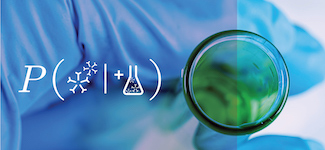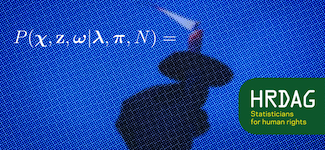
How much faith can we place in coronavirus antibody tests?
Given a positive test result, what is the probability that an individual has antibodies? This HRDAG-authored Granta article explains the science.

HRDAG is identifying and interpreting the best science we can find to shed light on the global crisis brought on by the novel coronavirus, about which we still know so little. Right now, most of the data on the virus SARS-CoV-2 and Covid-19, the condition caused by the virus, are incomplete and unrepresentative, which means that there is a great deal of uncertainty. But making sense of imperfect datasets is what we do. HRDAG is contributing to a better understanding with explainers, essays, and original research, and we are highlighting trustworthy resources for those who want to dig deeper.

Given a positive test result, what is the probability that an individual has antibodies? This HRDAG-authored Granta article explains the science.

HRDAG has authored two articles in Significance that add depth to discussions around infection rates.

We’ve built a model for estimating the true number of positives, using what we have determined to be the most reliable datasets—deaths.

With so many dashboards and shiny visualizations, how can an interested non-technical reader find good science among the noise?

In this Granta article, HRDAG explains that neither the infectiousness nor the deadliness of the disease is set in stone.
A Guide for Understanding the Statistics about Covid-19
https://www.significancemagazine.com/science/652-a-statistician-s-guide-to-coronavirus-numbers
Why it’s so freaking hard to build a good Covid-19 model
https://fivethirtyeight.com/features/why-its-so-freaking-hard-to-make-a-good-covid-19-model/
StatsChat: Professor Thomas Lumley’s blog on statistical thinking
https://www.statschat.org.nz/
The World Health Organization Covid-19 Dashboard
https://covid19.who.int/